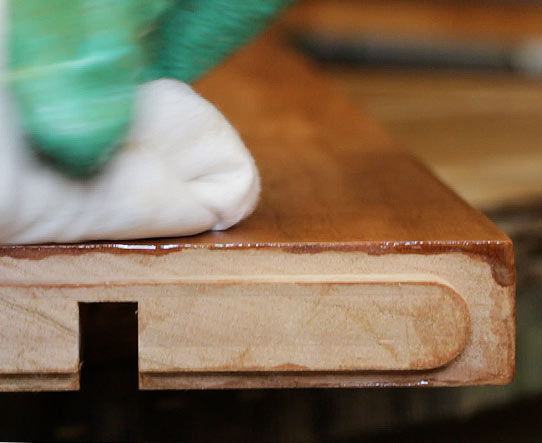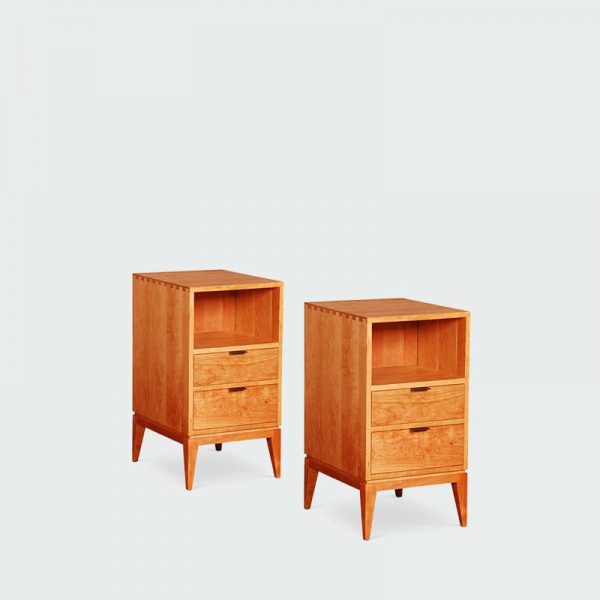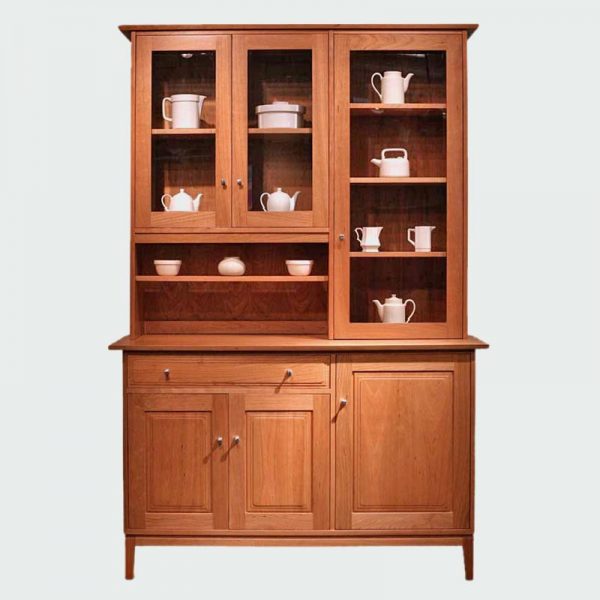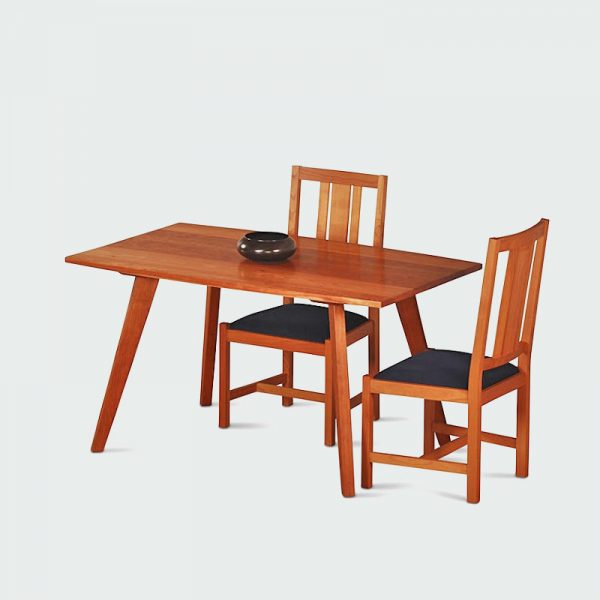How to care for your solid wood furniture

Solid wood furniture care
With the proper care your oil-finished solid wood furniture ages beautifully; its mature colors warming and mellowing with the passing years. The following are some methods to clean and protect your furniture.
The following are some methods to clean and protect your furniture.
Citrus cleaner like Touch of Oranges
Scotchbrite pad (000 or 0000 steel wool as substitute),
Danish Oil
Paste varnish
To order our furniture care kit, please call 212 620 4682 or send an inquiry to info@scottjordan.com.
The price is: $ 85.00
Preparation
Before you begin the cleaning and revitalization of your fine furniture it is important to protect the floors and adjacent areas. It is a good idea to spread a tarp or plastic sheet under the piece of furniture. A few minutes spent preparing the work area and protecting nearby furnishings is time well spent.
Adequate ventilation is also very important. Generally, the citrus-based cleaners that we favor don’t have an unpleasant odor but they often do contain some mineral spirits and should be handled with proper care. Keep away from open flames or other heat sources. Likewise for Danish Oil and paste varnishes. See the safety information regarding these materials
A well lit work area is the key to obtaining superior results. It’s best if you can work at a brighter light level than will be the ambient level of the room. This way, the surface condition can be viewed more critically than it will appear in everyday use. Working in front of a bright window is ideal since this allows the surface to be examined in an oblique light.
It is advisable to use rubber gloves to protect the hands from the Danish oil and paste varnish. These materials become sticky as they cure and it’s easier to keep them off the skin in the first place than to remove them later using mineral spirits.
And, of course, one should be wearing work clothes and shoes that won’t be ruined by drips of oil or varnish.
Cleaning
The first step in revitalizing your furniture is cleaning the dirt from the surface. A very effective product for this is a citrus-based solvent. Our favorite is Touch of Oranges for Wood Care. The active ingredient is d-limone. Be cautioned that there are many cleaners on the market that are promoted as “orange” cleaners that do not contain d-limone. Although they might very well be good cleaners for a lot of things, we can only recommend those actually containing d-limone.
Apply the citrus cleaners using a Scotchbrite pad, scrubbing gently in the direction of the grain of the wood. Wrap the Scotchbrite around a block of some sort to make the work a bit easier. Allow the solvent to remain on the surface for a few minutes so that it can soften the dirt then rub some more. Use a soft rag or paper towel to remove the solvent slurry from the surface. It is a good idea to repeat the cleaning process making sure that after the second cleaning the solvent that is removed looks clean. Run your hands over the surface to determine if there is any debris stuck to the surface. Remove any such debris with a plastic scraper; a credit card works well. Repeat the cleaning process until you are satisfied that the surface is clean and smooth. Dry the surface with a clean paper towel.
Rubbing
The next step is to rub the surface with a clean Scotchbrite pad in the direction of the grain. The objective is to gently rub away loose wood fibers and old finish from the surface and to create an even sheen on the surface. To minimize fatigue hold the Scotchbrite pad with the open palm (if possible), or wrap the pad around a block of wood. Examine the surface in an oblique light and try to obtain an even surface sheen rubbing with the pad. When you are satisfied that the surface is smooth and that you have achieved an even sheen when viewed in an oblique light, vacuum the surfaces clean of dust.
At this point a judgment is needed as to what to do next. The citrus solvent will make the surface look better by itself but it is not very protective of the wood used alone. If the wood has been neglected for a while and looked very dry and rough prior to the cleaning process then the surface will greatly benefit from re-application of one or more coats of oil and paste varnish as described in the following paragraphs. If however, the surface has not been neglected and the cleaning process is followed as part of a regular maintenance regimen then it is possible to go directly to the wax polishing steps.
Re-oiling
Apply an even coat of finishing oil (Danish oil) with a soft cloth. Allow to stand for a few minutes. If you can see that the oil is soaking into the wood apply some more oil to those areas. Wipe off any excess oil leaving an even film on the surface. Allow this oil film to dry for a day or so.
It is very important that the oily rag used to apply the oil be disposed of properly.
Rubbing again
After the oil has cured for a day or so rub the surface again with the Scotchbrite pad, using a block. At this point the quality of the finish might be acceptable for a piece of furniture that does not get much wear, say a dresser. If that is the case go on to the wax polishing steps.
If you are refinishing a tabletop or other surface that gets a bit more wear it is beneficial to repeat the oiling process a second time. Beyond this an even more durable finish can be developed by an application of one or more coats of a paste varnish.
Paste varnish
Create an applicator pad from a small rag torn from an old tee shirt. Use this pad to apply the paste varnish sparingly and rub into the surface. Try to avoid any swirl marks from excess varnish. Allow the coat to dry for several hours. Apply one or more coats in this manner building up a relatively durable surface. After you are satisfied with the appearance of the surface (we often put on three light coats) proceed to the wax polishing steps.
Wax polishing
Now we have arrived at the easy part. Rub some wax polish (we recommend Touch of Oranges Bees Wax Wood Preserver) onto the cleaned and possibly re-oiled surface with a soft cloth or used but clean green Scotchbrite pad. Let the wax dry for a few moments then buff with a soft cloth. For best results buff with a wool rag.
Safety information on furniture finishing oils and varnishes
The process of an oil/varnish finish on wood involves the oxidation of the finishing oil or varnish. This oxidation process gives off heat. This is not a problem on the wood itself but can pose a serious fire hazard if the rags are carelessly disposed of after use.
It is best to take the rags used in the application of the oil or varnish outdoors and allow them to air-dry on a clothesline until the oil hardens and the rags become a little stiff. They then can be disposed of in a covered outside trash container.
Do not dispose of oily rags in indoor trash cans-it could result in a serious fire!
Warning about furniture polishes that contain silicone
Silicone impregnate the wood fibers and can prevent the wood from accepting a new finish. It is very difficult to refinish wood that has been treated with silicone polishes. Silicone interfere with attempts to apply a new finish to an apparently clean surface that is affected with silicone wax. The presence of these nearly impossible to remove silicone compounds will produce a surface finish with spots (called fish-eyes) where the silicone have prevented the new finish from adhering. Silicone polishes are nearly impossible to remove completely; it’s better to avoid them in the first place.
Order our Furniture Care Kit
Complete kit for restoring and maintaining the beauty of your fine wood furniture.










